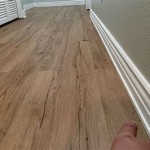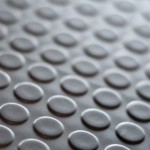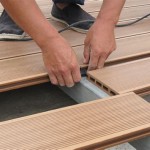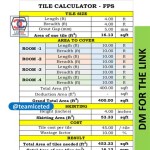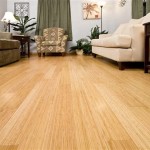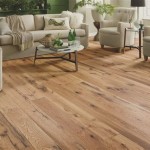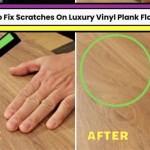Gray Spots on Hardwood Floor After Cleaning With Vinegar
Hardwood floors are a highly desirable feature in many homes, adding warmth, character, and value. Maintaining their beauty, however, requires careful consideration of cleaning methods. While vinegar is often touted as a natural and effective cleaning agent, its use on hardwood floors can, under certain circumstances, lead to unintended consequences, most notably the appearance of gray spots. Understanding the underlying causes of these spots and the appropriate preventative and corrective measures is crucial for preserving the integrity and aesthetic appeal of hardwood floors.
The occurrence of gray spots after cleaning hardwood floors with vinegar is not a coincidence. It stems from a combination of factors related to the composition of hardwood, the properties of vinegar, and the finishing applied to the floor. This article will explore these factors in detail, explaining why vinegar, despite its cleaning reputation, can be detrimental to hardwood floors, and outlining alternative cleaning strategies to avoid the issue.
The Acidity of Vinegar and Its Impact on Hardwood Finishes
Vinegar, specifically white distilled vinegar commonly used for cleaning, is a weak acid. Its acidity is determined by its pH level, which typically falls between 2 and 3. This acidic nature is what makes vinegar effective at dissolving mineral deposits and cutting through grease. However, it's also this acidity that poses a threat to certain types of hardwood floor finishes.
Many polyurethane finishes, particularly older formulations, are susceptible to damage from acidic substances. Prolonged or repeated exposure to vinegar can gradually erode the finish, dulling its shine and creating a hazy or cloudy appearance. This dulling effect is often the precursor to the formation of gray spots. The acid in the vinegar reacts with the protective layers of the finish, breaking down the polymer chains and weakening the protective barrier. Over time, this degradation allows moisture and dirt to penetrate the wood beneath, leading to discoloration and staining.
Wax finishes, another type commonly found on older hardwood floors, are even more vulnerable to vinegar. Wax is a relatively soft and porous material, and the acid in vinegar can dissolve and remove the wax layer altogether. This removal leaves the bare wood exposed and unprotected, making it highly susceptible to staining and water damage. When water mixed with dissolved wax residue penetrates the wood, it can create dark, uneven patches that appear as gray spots.
It's important to differentiate between surface finishes and penetrating finishes. Surface finishes, like polyurethane and wax, form a protective layer on top of the wood. Penetrating finishes, such as oil-based finishes, soak into the wood fibers and harden, providing protection from within. While penetrating finishes are generally more resistant to the effects of vinegar than surface finishes, repeated exposure can still lead to drying and discoloration over time. The acidity can disrupt the natural oils in the finish, causing it to become brittle and less effective at repelling moisture.
Furthermore, prefinished hardwood floors, which are finished at the factory under controlled conditions, may have more durable finishes than those applied on-site. However, even these finishes can be susceptible to damage from prolonged exposure to acidic cleaners like vinegar. The type of finish used by the manufacturer is a crucial factor in determining the suitability of vinegar as a cleaning agent.
Moisture Penetration and Subsequent Discoloration
One of the primary reasons gray spots appear after cleaning with vinegar is the increased susceptibility of the wood to moisture penetration. As discussed previously, vinegar can damage or remove the protective finish on the hardwood floor. This weakened or absent finish allows moisture, including the vinegar solution itself, to seep into the wood fibers. Hardwood is a porous material, and it readily absorbs moisture when exposed.
This trapped moisture creates an environment conducive to the growth of mold and mildew. While not always visible on the surface, mold and mildew can thrive beneath the finish, staining the wood from within. These microorganisms often produce dark pigments that manifest as gray or black spots on the floor's surface. The discoloration is not merely superficial; it is deeply embedded within the wood grain, making it difficult to remove completely.
Even without the presence of mold and mildew, moisture itself can cause discoloration in hardwood. When water penetrates the wood, it can react with tannins and other compounds present in the wood fibers, leading to a darkening or graying effect. This is particularly common in lighter-colored woods, such as maple and ash, where the discoloration is more noticeable. The moisture also disrupts the cell structure of the wood, causing it to expand and contract, which can further contribute to the appearance of gray spots.
The severity of the discoloration depends on several factors, including the type of wood, the amount of moisture absorbed, and the duration of exposure. Floors that are frequently cleaned with vinegar or that are located in humid environments are at a higher risk of developing gray spots due to persistent moisture penetration. It’s important to note that even small amounts of standing water, if left unaddressed, can lead to significant discoloration over time. This is especially true in areas with damaged finishes, where the wood is directly exposed to moisture.
Moreover, the pH of the water used to dilute the vinegar solution can also play a role. Hard water, which contains high levels of minerals, can leave behind residue that interacts with the vinegar and the wood finish, contributing to the formation of spots. Using distilled or demineralized water can help to minimize this risk.
Alternative Cleaning Methods for Hardwood Floors
Given the potential risks associated with using vinegar to clean hardwood floors, adopting alternative cleaning methods is essential for maintaining their longevity and appearance. Several commercially available hardwood floor cleaners are specifically formulated to be safe and effective, without the harsh effects of acidic substances.
These specialized cleaners typically have a neutral pH, preventing damage to the finish. They also contain ingredients that help to lift dirt and grime without leaving behind residue. When selecting a hardwood floor cleaner, it is crucial to choose a product that is specifically labeled for use on finished hardwood floors. Avoid using general-purpose cleaners, as they often contain chemicals that can dull or damage the finish.
Another effective and safe cleaning method is using a microfiber mop dampened with plain water. Microfiber mops are highly absorbent and effectively trap dirt and dust without requiring excessive amounts of water. It is crucial to ensure that the mop is only slightly damp, not soaking wet, to prevent water from seeping into the wood. Regular dusting or vacuuming with a soft brush attachment is also essential for removing loose dirt and debris that can scratch the finish.
For tougher stains or spills, a mixture of mild dish soap and water can be used cautiously. Dilute a small amount of dish soap in a bucket of water, and use a barely damp microfiber mop to gently clean the affected area. Immediately dry the area with a clean, dry cloth to prevent water from lingering on the surface. Avoid using abrasive cleaners or scrubbing pads, as they can scratch and damage the finish. For particularly stubborn stains, consulting a professional hardwood floor cleaning service is recommended.
Preventative measures also play a significant role in maintaining the cleanliness and appearance of hardwood floors. Placing mats at entrances can help to trap dirt and grit before they are tracked onto the floor. Regularly trimming pets' nails can prevent scratches and gouges. Using furniture pads under chairs and tables can protect the floor from scratches caused by movement. Addressing spills promptly can prevent staining and water damage. Implementing these simple precautions can significantly reduce the need for harsh cleaning methods and prolong the life of the hardwood floor.
In conclusion, while vinegar may seem like a convenient and natural cleaning solution, its acidic nature poses a risk to hardwood floor finishes, potentially leading to moisture penetration and the development of unsightly gray spots. Understanding the reasons behind this phenomenon and adopting safer cleaning alternatives are crucial for preserving the beauty and integrity of hardwood floors. Regular maintenance and preventative measures also contribute significantly to maintaining the floor's condition and minimizing the need for aggressive cleaning methods.

Hazy Hardwood Floors Here S What To Do Dave Floor Sanding

How To Remove Stains From Wood The Craftsman Blog

The Best Way To Remove Stains From Wood Floors Maria Louise Design

The Best Way To Remove Stains From Wood Floors Maria Louise Design

Removing Dog Urine Stains From Hardwood Floors Hometalk

The Best Way To Remove Stains From Wood Floors Maria Louise Design

How To Remove Pet Urine Stains From Wood Floors Guaranteed

Hardwood Floors After A Clean Screen And Recoat

Top Tips On How To Remove Black Stains From Hardwood Floors Leader Blog

The Best Way To Remove Stains From Wood Floors Maria Louise Design
Related Posts

